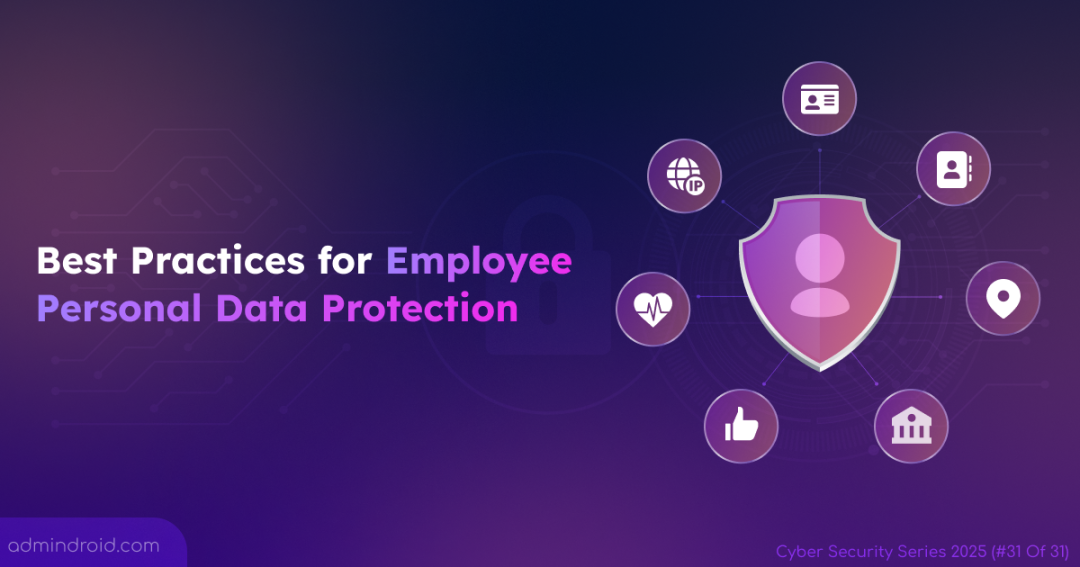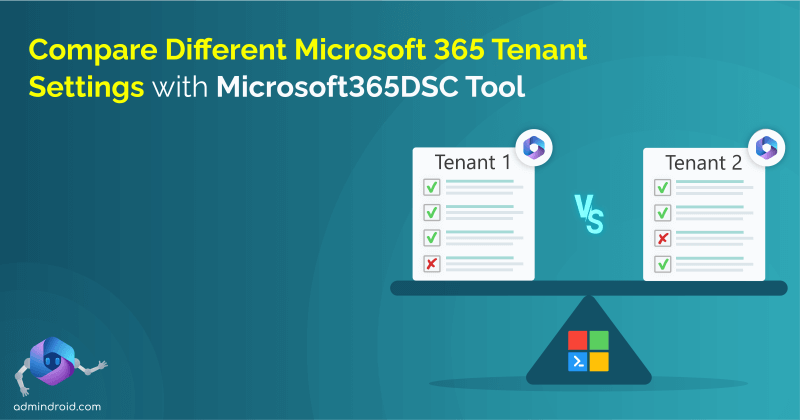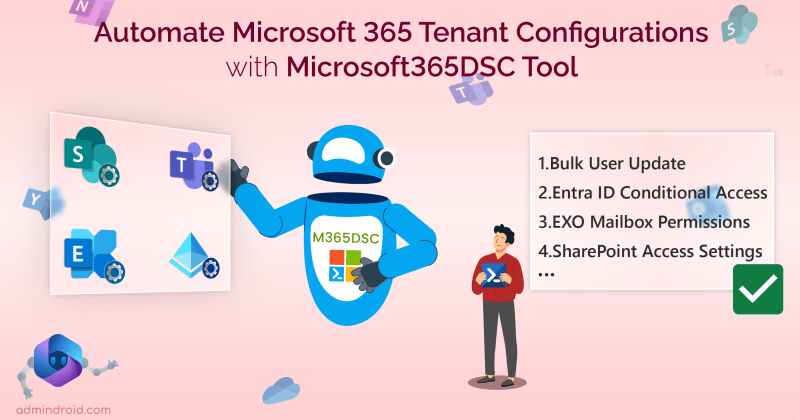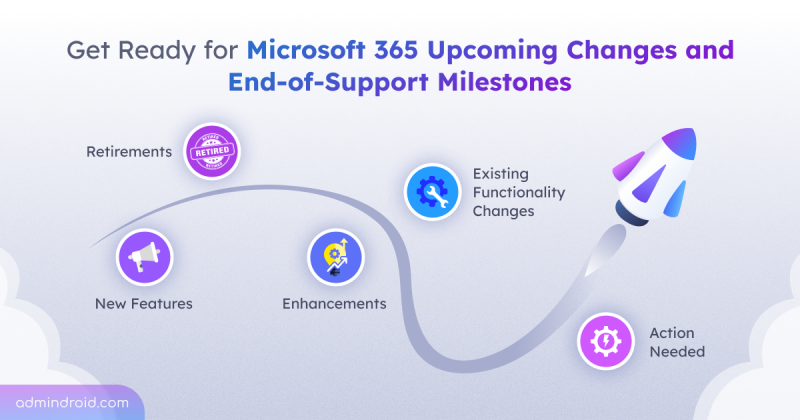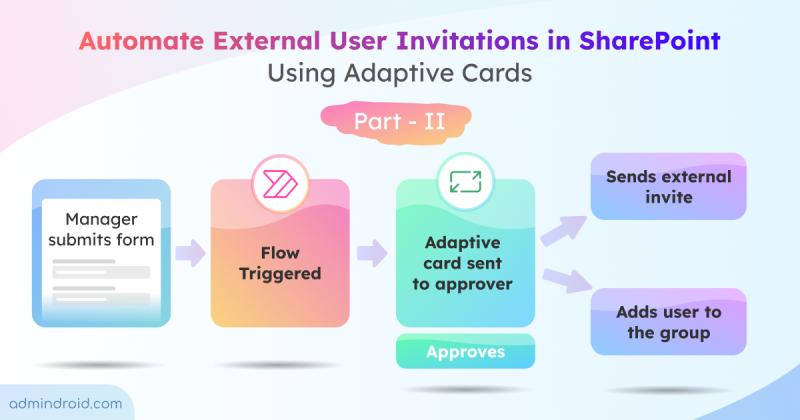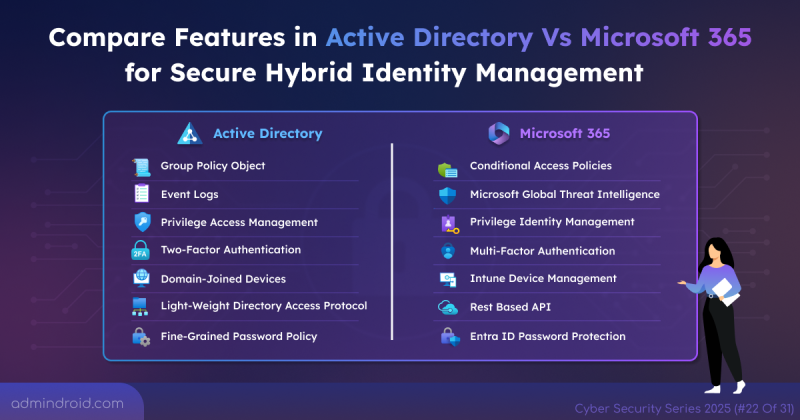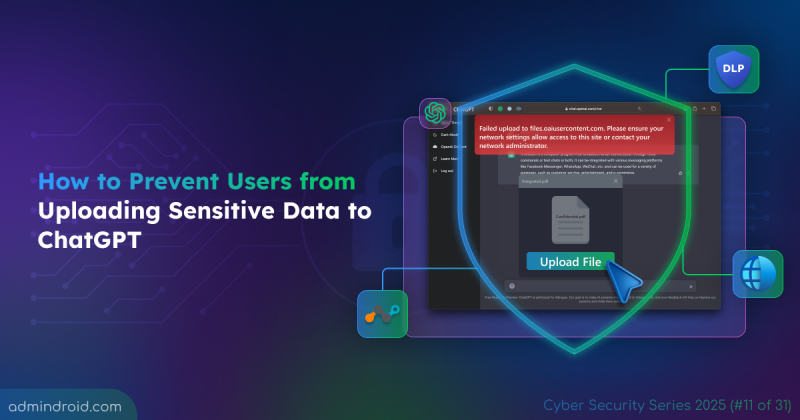On Day 31 of Cybersecurity Awareness Month, let’s wrap up with the essential steps every admin should take to ensure employees’ personal data protection. For a recap on other significant settings to enhance security, check out our Cybersecurity blog series.
As digital collaboration grows, employee personal data is exchanged across countless systems, apps, and networks. This expanded connectivity increases the risk; a single misconfiguration, unmonitored device, or policy gap can expose sensitive information. Protecting Employee Personal Information (EPI) now demands more than traditional perimeter defenses. IT administrators must adopt a layered approach that manages identity, enforces least privilege, monitors activity, and applies proactive controls at every endpoint.
This guide outlines ten practical and strategic best practices for IT administrators to build a resilient framework for employees’ personal data protection. Whether you’re managing hybrid environments or preparing for audits, these practices will help you stay ahead of threats!
Security Is Also About People, Not Just Systems
Why Employee Personal Data Protection Matters
Personal data is more than just a collection of facts. It’s a reflection of who we are. It includes identifiable information such as your full name, home address, phone number, email ID, and government-issued IDs. It can also cover financial records and online behavior like search history, location data, and social media activity.
This data is constantly being collected by websites, apps, service providers, and even smart devices. While this can enhance user experience and personalization, it also opens the door to serious risks if not properly protected.
Common Cyber Attacks Targeting Employee Data
Attackers no longer target only systems; they go after people who access and manage data. Each of these methods can directly compromise EPI if not detected and mitigated early:
- Spear Phishing: Personalized emails crafted to look authentic, tricking employees into revealing credentials or opening malicious links.
- HR Phishing Scams: Fake HR messages about payroll, benefits, or performance updates that capture sensitive employee data or payment details.
- Vishing (Voice Phishing): Fraudulent phone calls from attackers posing as IT or HR staff to extract confidential employee or system information.
- MFA Fatigue Scams: Repeated push notifications that prompt users to approve access requests out of frustration or confusion.
- Ransomware Attacks: Encrypt files containing personal and corporate data, halting business operations until a ransom is paid.
- Insider Threats: Employees or contractors who accidentally or deliberately share or leak personal information.
- Data Exposure via AI Tools: Sensitive details uploaded into unapproved AI or productivity tools that store and process user inputs.
10 Best Practices for Protecting Employee Personal Data
Now that we understand the importance of safeguarding personal data, let’s explore the actionable steps every IT administrator should take to ensure comprehensive personal data protection.
- Apply the principle of least privilege
- Establish a comprehensive data inventory
- Strengthen data confidentiality with encryption and masking
- Implement endpoint and device controls
- Secure data transfers and external sharing
- Control internet access to prevent data exposure
- Define and enforce security policies
- Develop and test an incident response plan
- Patch systems and remediate vulnerabilities
- Build a security-aware workforce
1. Apply the Principle of Least Privilege (PoLP)
Access control remains the cornerstone of data security. Implementing strict role-based permissions and enforcing least privilege access ensures only essential access is granted.
- Role-Based Access Control (RBAC): Assign privileges based on defined roles to maintain consistent and auditable access management. For instance, employee data access should be restricted strictly to HR, Payroll, or IT personnel who require it to perform their job duties.
- Regular Access Reviews: Conduct quarterly or biannual access reviews to validate permissions against current responsibilities. Access must be revoked immediately when roles change or employee leaves.
- Monitor Elevated Access: Privileged identity management (PIM) and privileged access management (PAM) help prevent unauthorized access to systems containing employee personal data. By implementing Just-in-Time (JIT) elevation and continuous monitoring of admin activities, organizations can limit exposure risks from excessive or misused privileges.
2. Establish a Comprehensive Data Inventory
Security begins with visibility. A complete understanding of employees’ stored data, like its type, location, and ownership, forms the foundation of every protection strategy.
- Automated Data Discovery: Deploy scanning solutions across servers, databases, SharePoint, and OneDrive. Extend the same coverage to cloud repositories such as Azure or AWS S3 to identify data containing Personally Identifiable Information (PII).
- Classification by Sensitivity: Label data according to criticality, such as Public, Internal, Confidential, and Restricted. Records related to finance or health should always be classified at the highest level.
- Maintained Inventory: Document details including data category, location, owner, retention period, and access permissions. Such an inventory supports compliance reporting, Data Subject Access Requests (DSARs), and incident responses.
Microsoft Purview Data Map and sensitivity labels can automate classification and ensure alignment with privacy standards such as GDPR and HIPAA.
3. Strengthen Data Confidentiality with Encryption and Masking
Encryption ensures that employee data remains unreadable, even in the event of unauthorized access. Mandate Full Disk Encryption (FDE) on all endpoints to protect data stored on devices from loss or theft.
- Encryption at Rest: Apply AES-256 or equivalent algorithms across servers, databases, endpoints, and backup repositories.
- Encryption in Transit: Enforce TLS 1.2 or higher for all data exchanges, including emails and service communications.
- Data Masking and Tokenization: In test or development environments, apply Data Masking and Tokenization to anonymize real PII. Tools such as Azure Key Vault and SQL Dynamic Data Masking help ensure secure, compliant data handling.
4. Implement Endpoint and Device Controls
Comprehensive endpoint management ensures that every device accessing corporate resources maintains security posture and data protection standards.
- Manage Devices with Intune: Register and manage all corporate and BYOD devices via Microsoft Intune for unified policy enforcement.
- Enable Windows Information Protection (WIP): WIP separates personal and corporate data on Windows devices, reducing accidental leaks. It prevents PII from being copied into personal apps or cloud accounts.
- Enable Remote Wipe: Ensure that lost or compromised devices can be wiped remotely to prevent data exposure and maintain compliance.
5. Secure Data Transfers and External Sharing
Information frequently leaves controlled environments through email, cloud collaboration, or third-party exchanges. By securing these pathways, organizations can minimize exposure risks and maintain control over sensitive employee data across all transfer points.
- Enterprise File Sync and Share (EFSS) Solutions: Implement a dedicated, secure EFSS platform as the primary method for external file transfers. These systems offer secure, auditable sharing with features like file revocation and detailed activity logs.
- Data Loss Prevention (DLP): Configure DLP policies to detect and block unauthorized personal data movement via email, Teams, or SharePoint.
- Digital Rights Management (DRM): Apply persistent usage policies to sensitive documents. DRM can prevent recipients from printing, copying, or forwarding files, and can revoke access even after the file has been downloaded.
6. Control Internet Access to Prevent Data Exposure
In the age of artificial intelligence, protecting employee personal data needs extra vigilance. Generative AI tools use data ingestion, collecting and processing user inputs, which can expose employee data if sensitive details are shared.
- Deploy a Zero Trust Network Architecture (ZTNA): Replace or supplement traditional VPNs with a ZTNA model. This strictly ensures users/devices can only access specific applications they are authorized for, reducing the attack surface from compromised devices.
- Block Unapproved Generative AI Tools: Use DNS filtering, secure web gateways (SWG), or firewall policies to block unapproved AI tools and personal cloud accounts.
- Prevent Data Uploads in Approved AI Platforms: Apply outbound data controls and DLP policies to monitor and restrict sensitive content uploads to AI even in authorized environments.
- Deploy Certificate-Based Blocking: Use SSL/TLS inspection to decrypt and analyze encrypted web traffic. This allows your security gateways to see and block data exfiltration attempts hidden within encrypted sessions to AI tools or cloud storage.
7. Define and Enforce Security Policies
Strong policies are the foundation of personal data protection. They set boundaries on how data is stored, accessed, and shared.
- Data Retention and Disposal: Keep personal data only as long as needed for business or legal reasons. Apply automated deletion via Microsoft Purview retention policies to minimize risk.
- Acceptable Use Policies (AUP): Define AUP to set up rules that define what employees can and cannot do with a company’s IT resources, including computers, networks, data, and software.
- Enforce Multi-Factor Authentication (MFA): Implement MFA universally through your identity and access management (IAM) solution, applying it to all users. For critical systems, enforce the strongest authentication (like phishing-resistant FIDO2, security keys, or CBA) instead of less secure methods like SMS.
8. Patch Systems and Remediate Vulnerabilities
Continuous visibility drives proactive defense and early threat detection. Strengthen it further by implementing the following monitoring and maintenance controls.
- Centralized Logging: Collect and correlate logs from endpoints, databases, and network devices using a SIEM tool like Microsoft Sentinel. Centralized data helps trace activity involving personal information.
- Anomaly Detection: Configure automated alerts for behaviors indicating potential compromise, such as abnormal access patterns or impossible travel activity.
- Patch Lifecycle Management: Establish consistent lifecycle workflows to identify, test, and deploy patches, with priority given to systems that process PII. Use Intune and Windows Update for Business to automate patching and reduce exposure risks.
9. Develop and Test an Incident Response Plan
Preparedness defines resilience. A documented and tested response plan minimizes disruption and data loss during incidents involving employee PII.
- Structured Response Process: Outline detection, containment, eradication, recovery, and communication steps, with clearly defined responsibilities.
- Tabletop and Simulation Exercises: Conduct controlled drills to assess readiness and refine procedures.
- Regulatory Compliance: Understand jurisdictional reporting requirements (for example, GDPR’s 72-hour disclosure rule) and maintain ready-to-use templates for regulator and stakeholder communication.
- Data Backup and Recovery: Maintain secure, regularly-tested backups of critical data. Ensure backups are isolated from the main network (e.g., air-gapped or immutable) to enable reliable restoration after a ransomware attack or data corruption.
10. Build a Security-Aware Workforce
Last but not least! Human awareness is as critical as technical control. A workforce that understands risk becomes an extension of the security perimeter.
- Continuous Training: Run short, frequent sessions with real-world examples and phishing simulations to keep awareness fresh.
- Align Security Training with HR Policies: Collaborate with the Human Resources department to ensure all security awareness training is directly tied to the AUP and data handling procedures.
- Streamlined Reporting Channels: Encourage timely reporting of anomalies through simplified tools and processes.
By embedding these principles into our daily operations, we foster a culture of vigilance that provides lasting protection for employee personal data. Building a mature security posture is an ongoing commitment; one achieved through consistent practice rather than isolated controls. If you have any queries, please feel free to reach out to us through the comments section.
